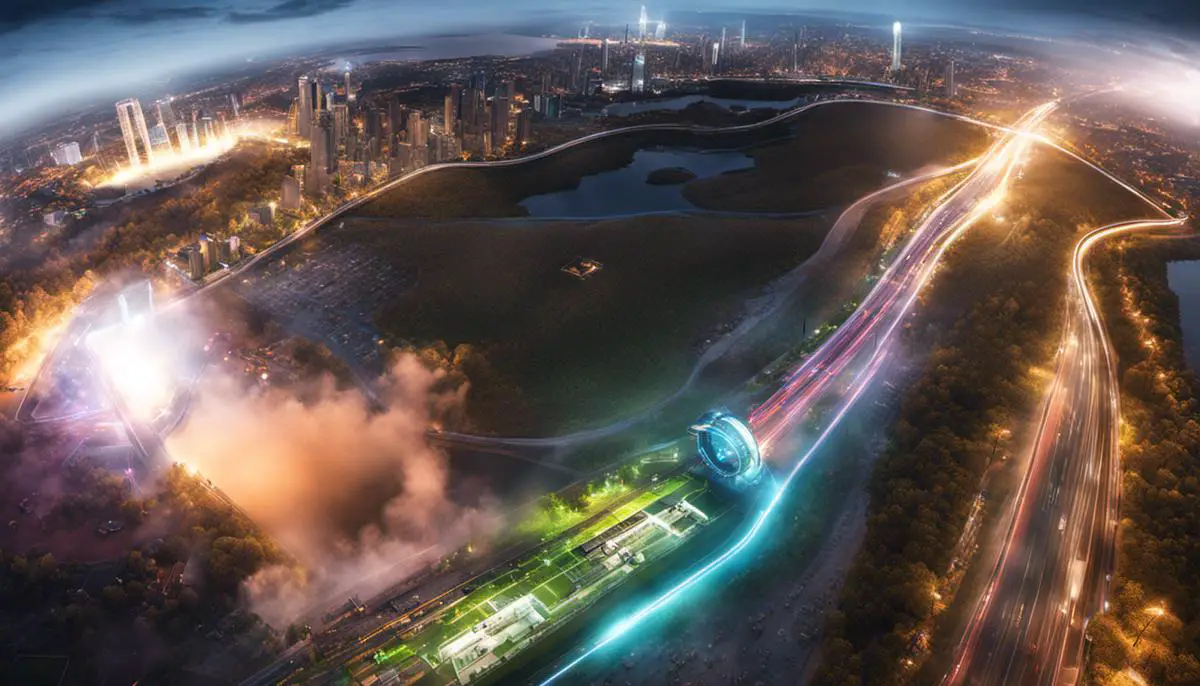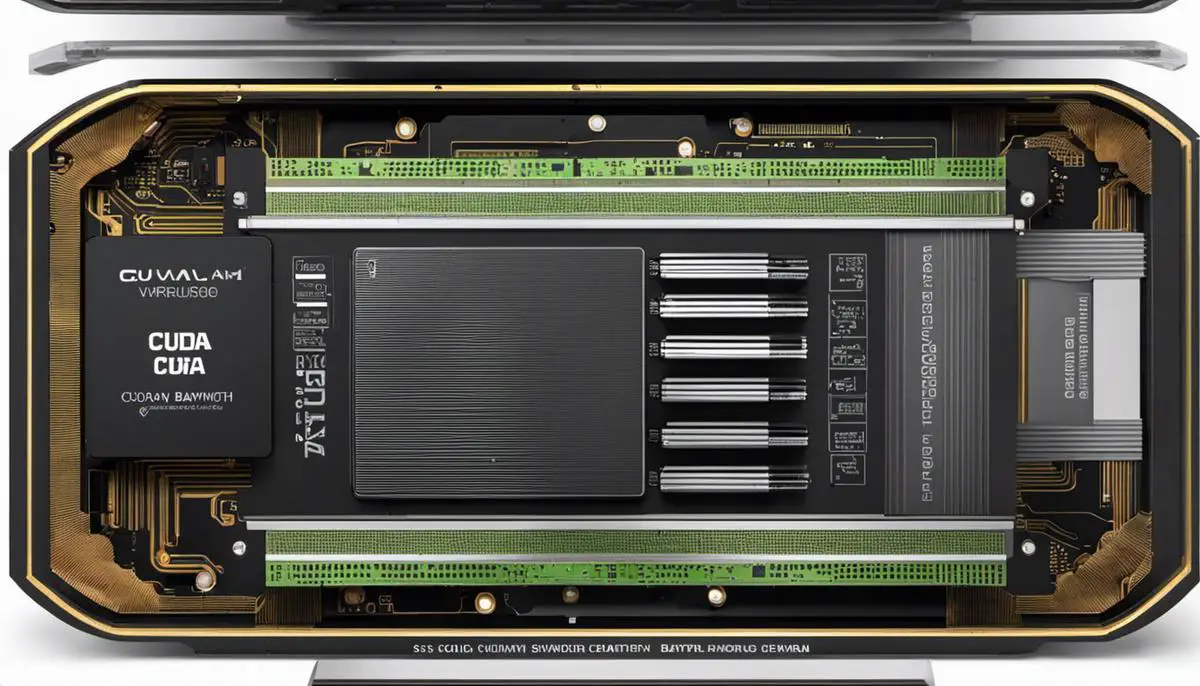In the pursuit of deepening the understanding and application of Artificial Intelligence (AI), we are inadvertently met with the challenge of selecting the optimal Graphics Processing Unit (GPU). This choice is vital, as the GPU plays a critical role in managing and improving operations, especially in the realm of AI.
This discussion aims to insightfully tackle GPU Terminology like CUDA cores, VRAM, and memory bandwidth. We will explore how these terms influence the specification parameters of a graphics card.
Our focus will also delve into the evaluation of GPU Performance, understanding the impact of computational capacity, memory size, power consumption, and software support on a GPU’s ability to handle intricate AI tasks. Lastly, we will navigate through the aspects of Budgeting and Compatibility, looking closely at factoring in the cost and ensuring system compatibility when choosing a GPU for AI work.
Contents
Understanding GPU Terminology
When diving headfirst into the groundbreaking realm of Artificial Intelligence (AI), your hungry beast of a computer is going to need the right graphics processing unit (GPU) to keep up with all the power-hungry machine learning tasks it’ll have to juggle.
But before picking out the right GPU for the job, it’s important to familiarize oneself with a few key terms. Notably: Compute Units, Tensor Cores, Memory Bandwidth, Power Requirements, TeraFLOPs, and CUDA Cores.
- Compute Units: Also known as Stream Multiprocessors (SMs) in NVIDIA lingo, Compute Units are essentially the backbone of your GPU, made up of cores that carry out computations and a cache that stores data. More Compute Units boast an elevated performance but remember, not all units are created equal. Compare GPUs of the same brand to have a fair comparison.
- CUDA Cores: Proprietary to NVIDIA, CUDA (Compute Unified Device Architecture) cores are essentially the GPU’s engine for performing computations. More CUDA cores generally equal better performance, vital for machine learning and other AI applications.
- Tensor Cores: Another NVIDIA-specific term, Tensor Cores are designed for AI’s complicated matrix computations. They’re particularly adept at accelerating machine learning workloads, and they contribute massively to the so-termed “AI Revolution.” If your work revolves heavily around AI, Tensor Cores are a key feature to consider.
- TeraFLOPs: Floating Point Operations Per Second (FLOPs) is a measure of computational performance. A TeraFLOP (TFLOP) is one trillion FLOPs. This measures the raw horsepower of the GPU, providing a valuable indicator of its potential performance. That said, FLOPs alone shouldn’t be the sole determinant of your GPU decision. Always consider it in relation to other key stats.
- Memory Bandwidth: This measures the speed of the GPU’s onboard VRAM – vital for AI computations. A higher number here often indicates a faster GPU, as more Bandwidth allows more data to be read, written, and manipulated every second. It’s the highway facilitating communication between the GPU and its memory: the wider the highway, the greater the volume of data flowing through.
- Power Requirements: Racing engines devour oil; powerful GPUs consume electricity. Never overlook a GPU’s power requirement. It’s important to ensure your computer’s power supply can manage the GPU’s needs. Also, consider the potential for a high electric bill and heat output, which could necessitate additional cooling measures for your rig.
In summary, understanding these concepts can give a solid grasp of the underlying principles that matter when selecting the right GPU for AI applications. However, this is just the tip of the iceberg. Each GPU is a complex beast, with many other factors to consider during your selection process.
Do your due diligence and select a GPU that matches your specific needs, whether you’re designing autonomous systems, performing computational biology, or simply unleashing the next big AI innovation. With carefully considered specs, you’ll be better equipped to navigate the rollercoaster ride into the future of robotics and AI.
Evaluating GPU Performance
Advanced Methods to Evaluate GPU Performance for AI Application
In the realm of Artificial Intelligence (AI), utilizing the right GPU (Graphic Processing Unit) can significantly boost performance and productivity. But beyond CUDA cores, Tensor cores, TeraFLOPs, memory bandwidth and power requirement specifications, there’s more to measuring the performance of a GPU. To discern whether a GPU can effectively handle AI operations, consider evaluating the following components:
1. Overclocking Capabilities:
This isn’t strictly necessary for GPU performance, but overclocking lets a GPU run at higher than factory speed, providing a performance edge. It allows the system to process data faster and runs more operations per second. Not all GPUs handle overclocking equally, so it’s critical to understand the GPU’s limitations to avoid thermal issues or potential hardware damage.
2. Heat Management:
AI operations can be taxing on a GPU, leading to an increase in generated heat. Efficient thermal management is vital to ensure longevity and sustained performance. High temperatures can throttle down the speed of a GPU to cool off, impacting performance. Hence, examining the cooling solutions implemented in a GPU, such as heatsinks, fans, and even water cooling, should factor into your evaluation.
3. Multi-GPU Scalability:
AI workloads often demand enormous computational power. To meet such requirements, one might consider using multiple GPUs in tandem – this is termed as Scalability. Scrutinizing the GPU’s scalability potential is crucial for AI applications. Nvidia’s NVLink, for instance, lets GPUs directly link with each other for sharing memory and scaling application performance, improving AI workload management.
4. AI Specific Instructions:
Some GPUs are designed with machine learning and AI-specific instructions embedded into their technology, significantly accelerating AI processing. For instance, Nvidia’s Turing architecture uses a technology named Deep Learning Super Sampling (DLSS), while AMD has Rapid Packed Math to speed up AI computations. Assessing whether a GPU supports such instructions can aid your selection process for AI-centric tasks.
5. Ray Tracing:
While often related to gaming, ray tracing technology has applications in AI too. This technology offers AI models a sophisticated understanding of how light interacts with different surfaces, essential in AI areas like visual recognition and similar AI simulations. Hence, exploring a GPU’s ray tracing capabilities might also be beneficial.
6. Vendor Software Support:
Performing AI tasks with GPUs often requires proprietary software, such as Nvidia’s CUDA Toolkit for managing parallel computing. The quality of a vendor’s software, its ease of use, regular updating, and the company’s future support commitment are valuable considerations when choosing a GPU for AI tasks.
Navigating the labyrinth of GPU specifications and features may seem daunting, but understanding and diving deeper into these six observables should aid in choosing the right GPU for your AI applications. Efficiency, thermal management, scalability, AI-specific functions, ray tracing, and software support can set a GPU apart from its competitors, delivering the performance boost required for revolutionary AI advancements.

Budgeting and Compatibility
Choosing the right GPU for AI projects is an art that requires a detailed understanding of both subject matter and hardware technicalities. Access to information on nuanced topics such as VRAM, CUDA cores, and computational capacity, to mention a few, is not just beneficial but necessary.
Moreover, evaluating GPU performances based on factors such as memory size and software support makes the difference between amateur and professional AI work. And let’s not forget, operational costs and system compatibility are instrumental in the decision-making process.
The integration of all these knowledge spheres leads to a thoughtfully-selected GPU that not only fits budget constraints but also optimizes AI operation and the overall project success.

Emad Morpheus is a tech enthusiast with a unique flair for AI and art. Backed by a Computer Science background, he dove into the captivating world of AI-driven image generation five years ago. Since then, he has been honing his skills and sharing his insights on AI art creation through his blog posts. Outside his tech-art sphere, Emad enjoys photography, hiking, and piano.
